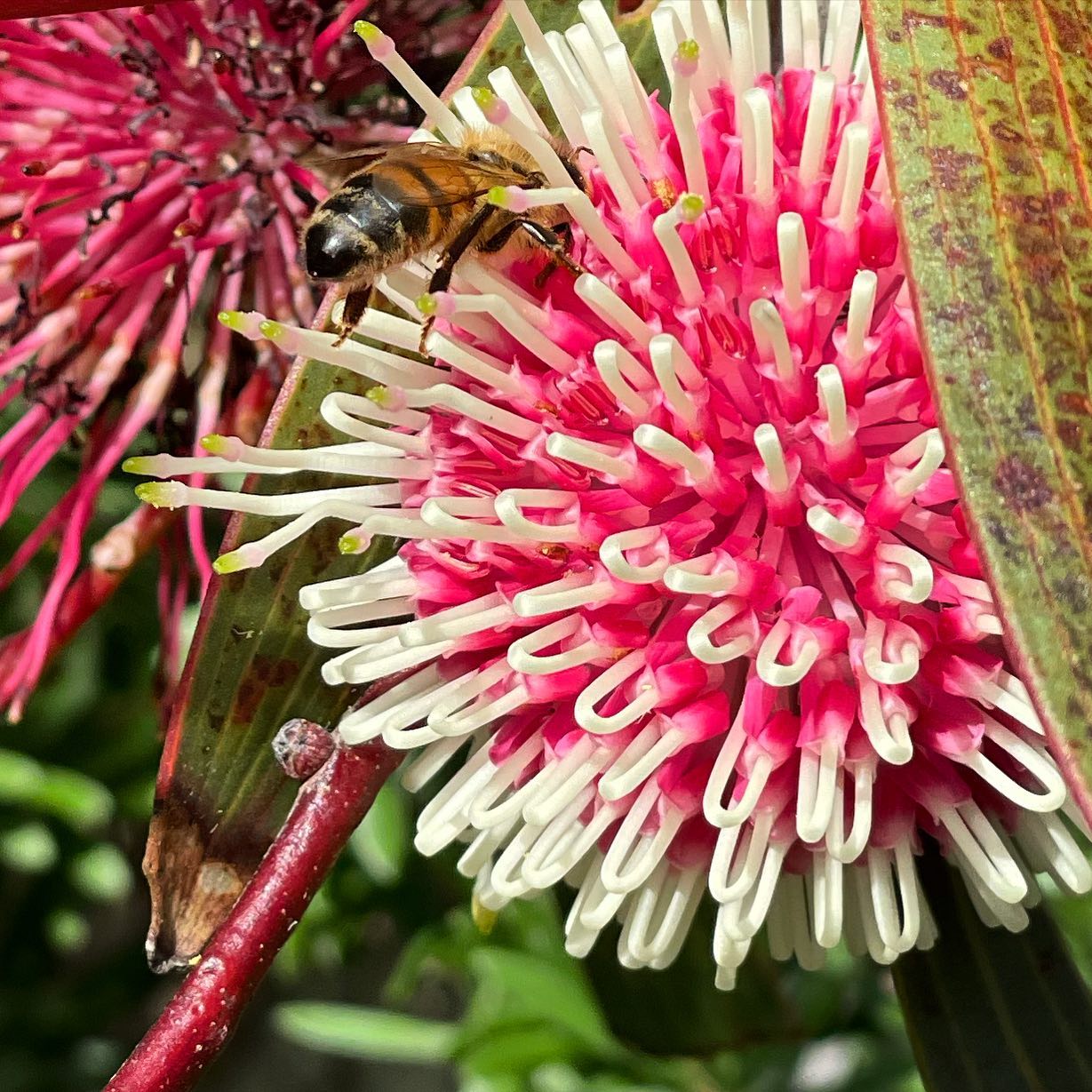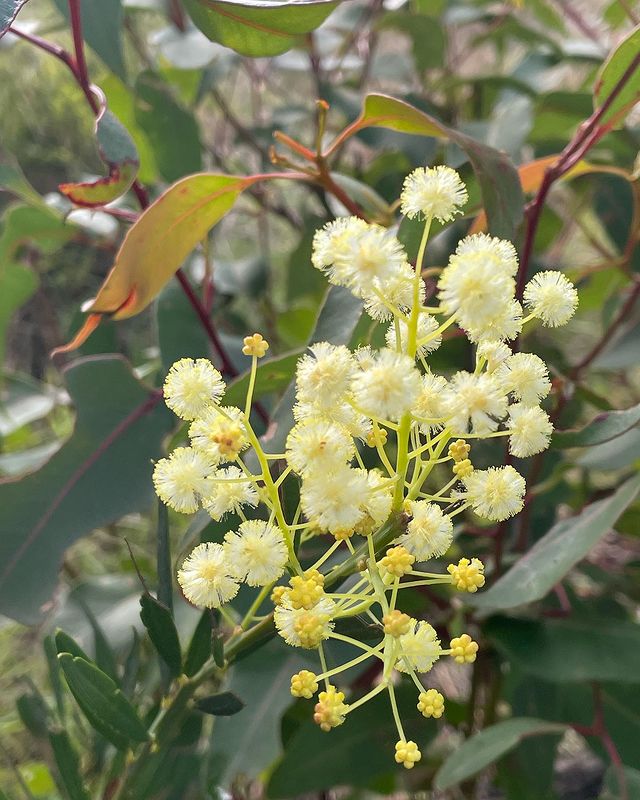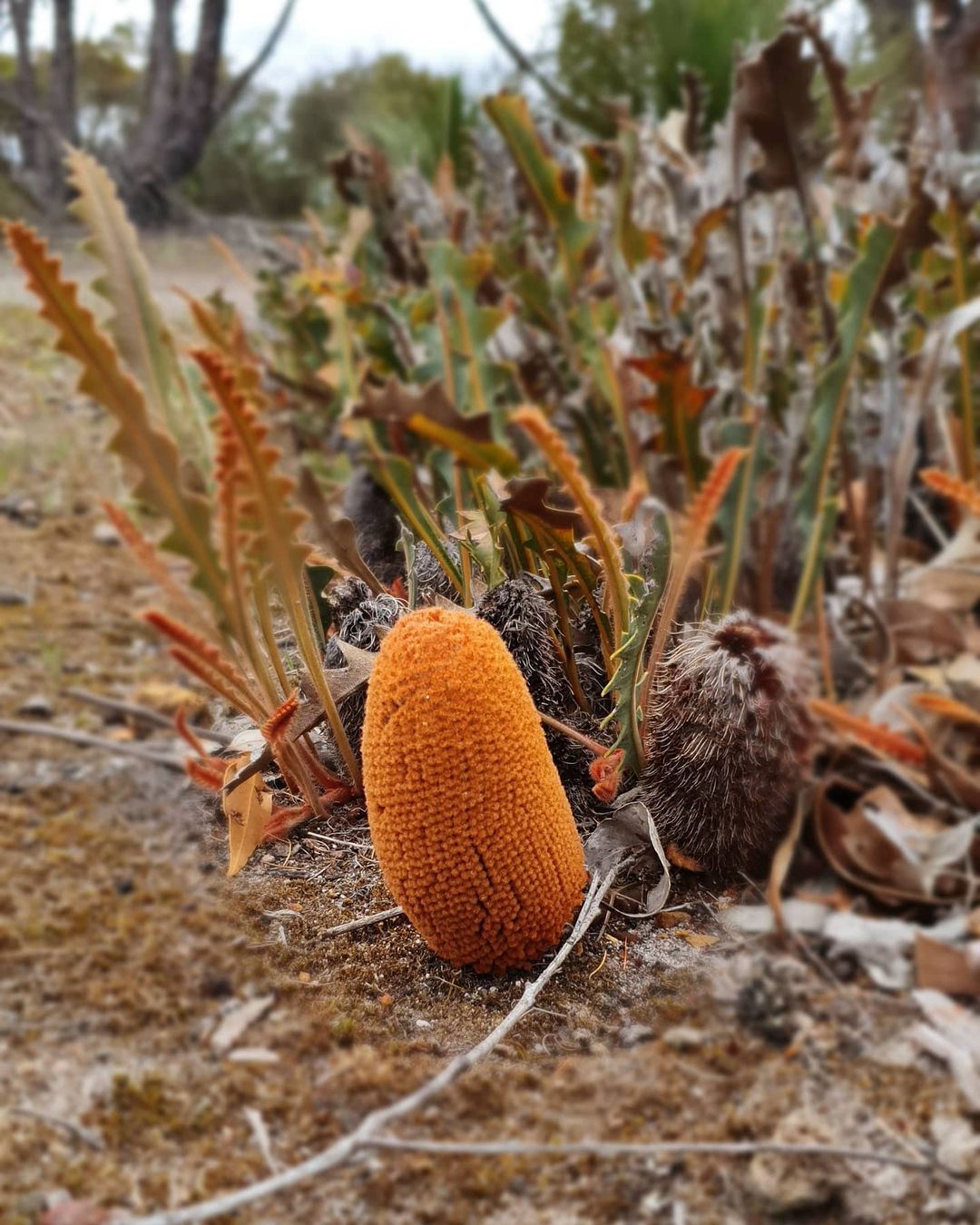Honey varieties
In autumn I’m inspecting Eucalyptus Occidentalis (Yate) for flower buds, these dark lanky trees grow in swamps, often inaccessible and boggy. In spite of the cool wet weather Yates often yield fantastic nectar, filling the hives with honey throughout autumn and winter.
Alternatively it might be the brown buds high in the mighty Karri trees that beckon us to go west into the drizzly mists of Walpole or Denmark to harvest the famed karri and Tingle honey.
The bees decide it’s spring when they taste the yellow canola pollen. This is a massive booster for the queen who begins to lay out massive sheets of brood enabling new colonies to be started. I put all the hives into a Tagasaste plantation that flowers at the same time as Canola. Tag also produces nectar and pollen and being a very small tree, makes swarm catching easy and provides a great shelter from the wind. If Tagasaste honey candies it is smooth and light, it is a sought-after honey complementing the canola that is a favourite of those who love its delicate flavour, best to keep it in a warm place. Harder to get winter/spring honeys include Hakea, spotted gum, and occasionally flooded gum and stunted Jarrah, there are many more nectar producing plants that can add to the seasonal variation.
[stunted Jarrah wrongly labelled Jarrah by some southern apiarists], cape-weed and vetch help build up colonies before mallees begin to flower, near the coast the bitter flavour of peppermint nectar sometimes becomes overpowering but it’s good for the bees.
Finding trustworthy fellow beekeepers to share seasonal information with has helped me enjoy bee keeping being beneficial to all except the lone rangers who trust no one.
Yate:
Commonly known as Flat Topped Yate or Swamp Yate, Eucalyptus occidentalis is a slender tree which is native to the South West of WA. As the name suggests this tree grows happily in swampy areas, producing pale yellow flowers over the winter. Yate honey offers a delicious mild caramel flavour.
Mallee:
Mallee describes a variety of smaller trees and plants which have multiple stems originating from one root. The majority of our mallee honey is harvested from regions near the Stirling Ranges, from autumn through to winter. This exquisite blend is a full flavoured honey for those who prefer more distinct floral notes in their honey.
Yate Mallee:
Harvested from the honey produced during the crossover of the Yate and Mallee seasons, this honey keeps the caramel flavour of Yate with more complexity and flavour added from the Mallee. It’s the best of both worlds! Yate Mallee honey is available during winter.
Marri:
Marri, or Red Gum, is a large tree that is decorated with clumps of creamy coloured flowers from late summer through to autumn. These produce a pollen which is known to be incredibly nutritious for bees. A traditionally popular honey with a delicate sweet flavour, this one is perfect for your morning toast.
Tagasasti:
Native to South Africa, Tagasasti has been a popular choice with farmers as a drought resistant wind-break. Flowering winter through to spring, the result is a beautiful light coloured honey often preferred as a sweetener for tea drinkers. A simple and very sweet honey which tends to crystallise quicker than other varieties.



